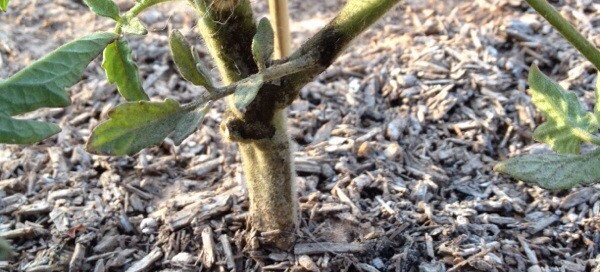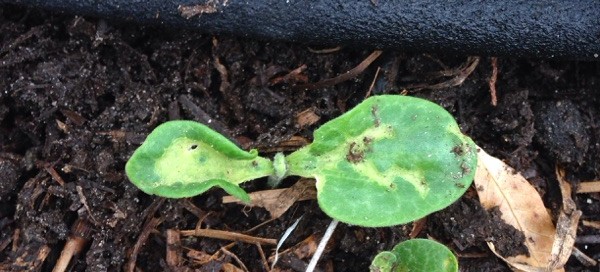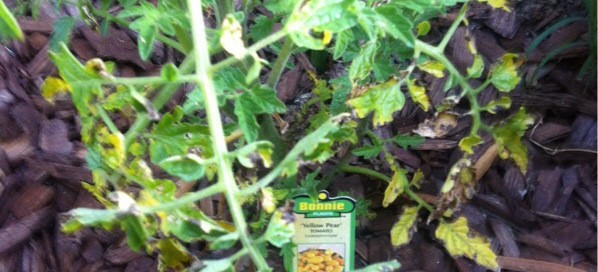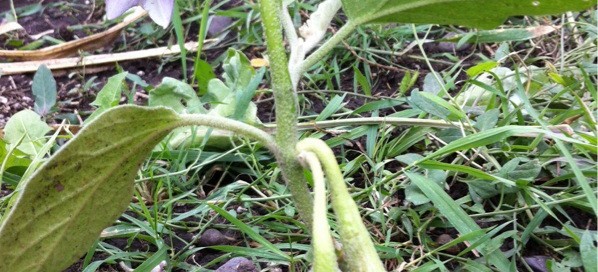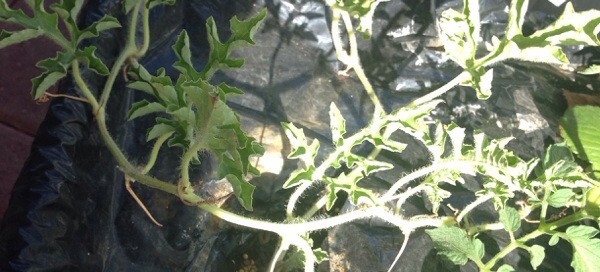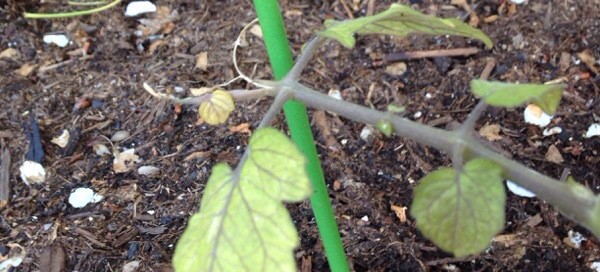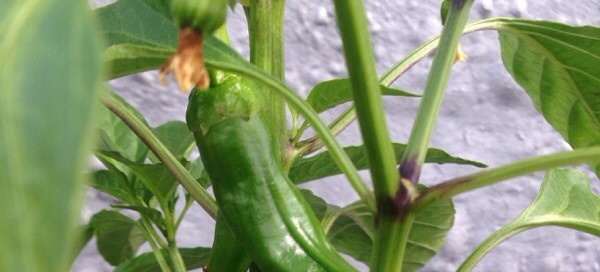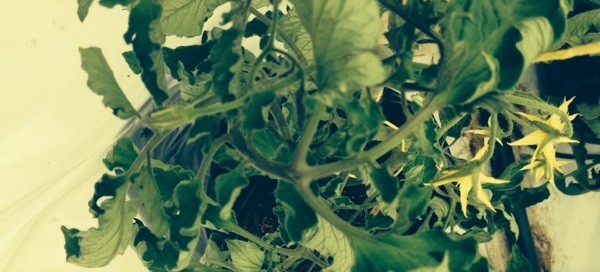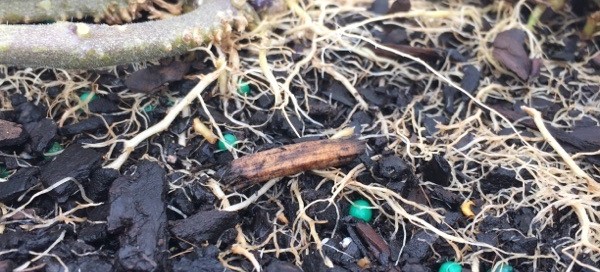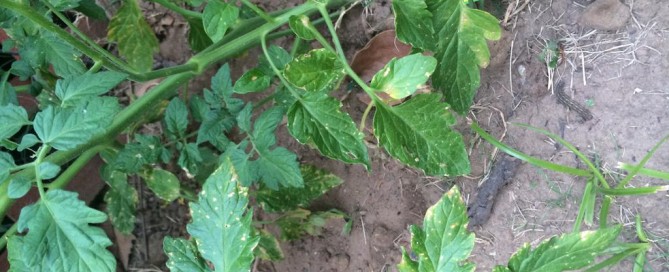Stem Rot On Tomato
This appears to be stem rot, which is usually caused by too much water and/or poor drainage. In your photo we see mulch right up against the stem; this can cause stem rot because moisture is being kept in contact with the stem by the mulch. Your plant appears to be doing ok from what we can see of it, so we recommend moving the mulch back from around the stem about 3-4 inches and don't apply water right at the stem. Apply the water about 3-4 inches away from the stem (this is usually where most of the roots are developing on young plants, so it provided water at the appropriate location. You cannot reverse stem rot, but it may not progress if you remove the mulch as we suggest. There are not "products" that can cure this, its a matter of environment.
